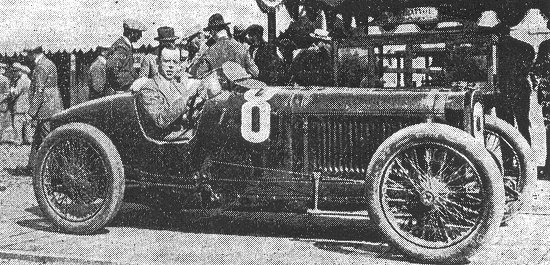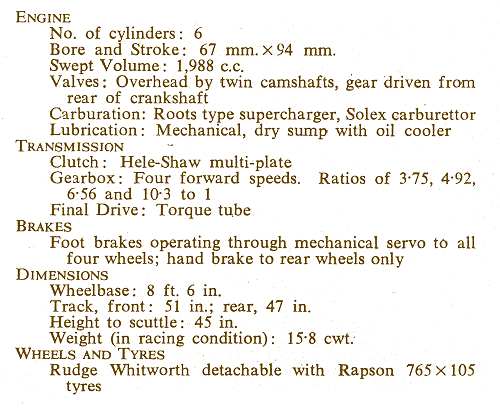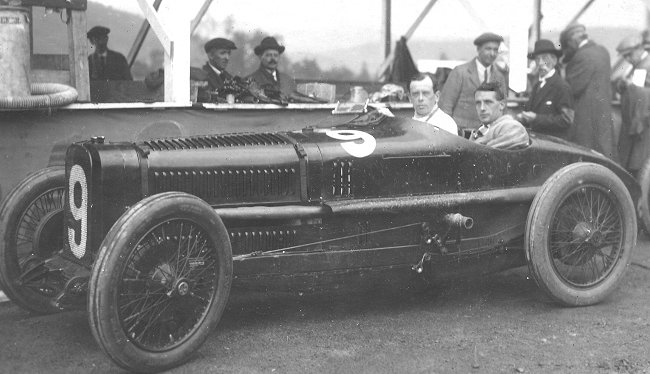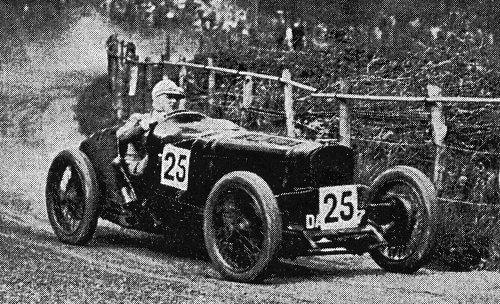|
Racing Tragedy and Success
Dario Resta had driven for Sunbeam for several years. He
was originally recruited in 1912, and when racing was banned in Europe at the
outbreak of war, he continued to race for Sunbeam in America. After a little
while he moved with his family to Bakersfield, California and created a small
racetrack at Buttonwillow. In 1923 he returned to Europe as a Sunbeam team
member for the Spanish Grand Prix at the Autodrome Nacional, Sitges. The race
took place on October 28th, but unfortunately Resta had to retire after 150
laps.
1924 was a bitter-sweet year for
Sunbeam’s Experimental Department, many racing successes were achieved during
the first half of the year, but tragedy soon followed. On March 29th, Resta came
2nd in the Kop Hill Climb, and on April 21st he finished in 3rd place in the
37th 100 mph. Long Handicap at Brooklands. On May 17th, driving one of the 1924
Grand Prix cars, he won the Aston Clinton Hill Climb, and also in the same car,
finished in first place in the South Harting Hill Climb, on May 31st. His last international race
took place on August 4th when he finished in 9th place in the Grand Prix de L'Europe, at Lyon, France.
|
|

Kenelm Lee Guinness at the
wheel, with mechanic Bill Perkins.
Courtesy of Jan Jeavons. |
| His last race was at the
International Class ‘E’ Records meeting at
Brooklands on September 3rd. Dario Resta competed for
Sunbeam along with mechanic Bill Perkins in their 6
cylinder G.P. car. Things went well until a tyre
came off a wheel rim on the 4th
lap. Resta lost control of the car, whilst was
travelling at around 115 mph. The car collided with
a corrugated iron fence, and Resta was instantly
killed. Bill Perkins ended-up in hospital, due to
his injuries. At the inquest it was mentioned that a
rear tyre had been punctured by a security bolt that
had been broken after hitting a bump in the track. |
|

Kenelm Lee Guinness in his
car at the Grand Prix de L'Europe at Lyon, France. |
 |
The specification for the
1924 two-litre Sunbeam cars. |
| Sunbeam’s next major event
was the Spanish Grand Prix at Lasarte, San Sebastian,
on September 27th. Two of the company’s
drivers, Henry Segrave and Kenelm Lee Guinness took
part in the race along with their mechanics.
Guinness’s mechanic should have been Bill Perkins,
but he was still in hospital recovering from his
injuries received at Brooklands, three weeks
earlier. He was replaced by Tom Barrett. |
|

Kenelm Lee Guinness and Tom Barrett
before the race. Courtesy of Jan
Jeavons. |
|
All went well for Guinness and Barrett
until the 11th lap, when
Guinness lost control of the car on the slippery
road surface after hitting a rut in the road. The
car turned through 180 degrees, and rolled over.
Guinness was thrown clear, across a steep railway cutting,
and collided with telegraph wires. He suffered serious head
and limb injuries, and never raced again. Unfortunately Tom
Barrett was trapped in the car, where he died from the
terrible injuries he received during the crash.
Due to this accident, the rules regarding
mechanics riding in cars were changed, and soon would be a thing of the past. Segrave on the other hand had an excellent race and finished in first place at
an average speed of 63.5m.p.h. No doubt he would have retired from the race had
he realised that Barrett was dead.
Guinness never fully recovered. After the race he became
increasingly mentally unstable, suffering from bouts of depression, and
delusions. He often imagined that he was continuously being followed. His
marriage was dissolved in 1936, and he was admitted to a nursing home. In April
1937 he returned to his home, 'Melbury', Kingston Hill, Kingston upon Thames,
and was found there on April 10th after committing suicide. He had gassed
himself. At the inquest the coroner recorded that the cause of death was asphyxia and carbon
monoxide poisoning from coal gas. He was buried at Putney
Vale Cemetery on 14th April, 1937.
|
|
 |
Read about
Tom Barrett |
Henry Segrave described the race in his book "The Lure of
Speed" published in 1928. This is his description:
On the night after the zoo-mile race Guinness and I went
off to San Sebastian, where we were to drive a couple of supercharged
2-litre Sunbeams. The course consisted of 35 laps, totalling 387½ miles, of
a circuit which looked at first all right to the eye, but turned out to be
in an abominably dangerous condition. The corners were supposed to be sanded
so as to give the tyres a reasonably good grip. But the Spanish workmen,
true to their tradition of avoiding any unnecessary work, discovered that it
was very much easier to dig clay out of a neighbouring field and sprinkle it
on the road rather than go some little distance off and get the sand which
they should have used.
This nearly cost Guinness his life, and
led to a crash in which his mechanic, Barrett, was instantly killed.
Just before the race I said to Bill
that I proposed to hang back for a few laps and see what was going to
happen. There were fourteen starters, representing Germany, Italy, and
England, and it appeared to me that on this occasion it would be good policy
not to go out too hard at first, especially as I had no great experience of
this very twisty circuit. Bill, however, said he proposed to go all out from
the drop of the flag. As a matter of fact, as I have noticed in many
previous events, Guinness's first lap is usually the fastest. Provided his
car runs consistently the later laps will not be much slower than the
initial one, but there are just a few seconds difference.

Henry Segrave at the wheel of one of the 2 litre cars
at Shelsley Walsh in May 1925.
He was taking one of those treacherous
turns on a road surface covered with wet clay, when his car refused to
answer its steering, left the road, ran up a steep incline on the left-hand
side of the road, then turned over three times down into the road again, and
finished up against a stone wall on the right-hand side.
Along the right side of the road were
telegraph poles and a railway cutting running parallel with it. Guinness and
his mechanic were both flung clear of the car the last time it turned over,
and actually went over the telegraph wires, and fell in the railway cutting.
Barrett, the unfortunate mechanic, was
instantly killed, while Guinness suffered severe injuries to his head and
legs. I shall never forget my amazement and dismay when I arrived at the
scene of the crash a few minutes later; and then for four consecutive laps I
had to pass the two stretchers carrying them to the field dressing-station,
not knowing whether my friend was alive or dead.
One's reaction in a case like this is
peculiar, because, knowing Bill as I did, I knew perfectly well that he had
not turned over through an error of judgment in driving, and therefore
something must have broken in his car to cause the accident. As both our
cars were identical, it followed that what happened to his car must happen
to mine, and so, not knowing what had caused Bill to turn over, I drove the
rest of the race waiting for anything to happen. It made me handle that car
as though it was made of glass!
In 1926 Louis Coatalen moved to the STD factory at Suresnes near Paris.
Although he spent most of his time in France, he continued to work part time
at Wolverhampton.
|
 |
|
 |
|
 |
Return to
Sunbeam,
Talbot, Darracq |
|
Return to
the beginning |
|
Proceed to
Land Speed Record |
|